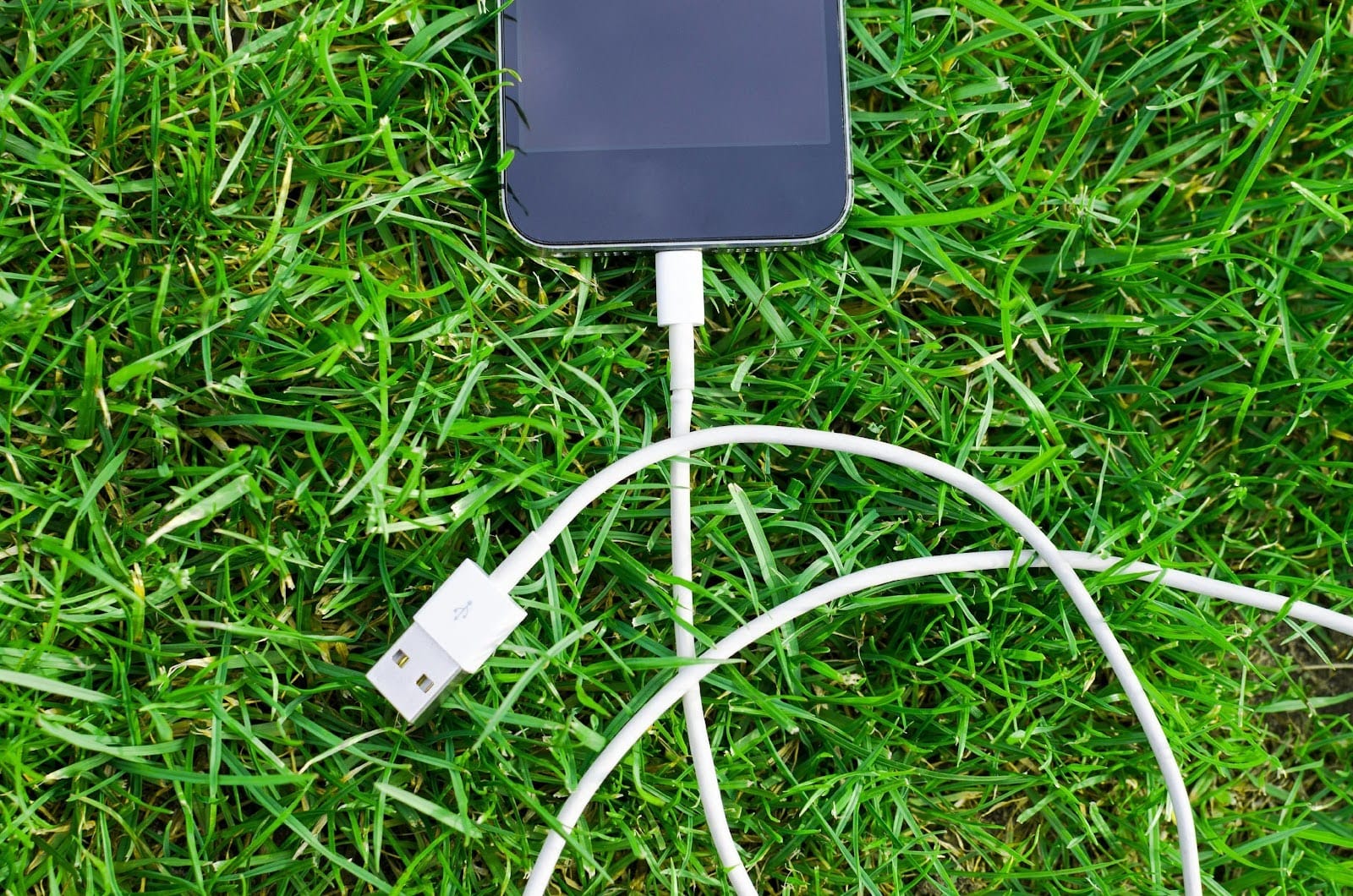Key Takeaways:
- Many phone charging issues can be solved by checking basics like secure connections, outlets, and restarting your device.
- Common culprits include faulty cables/adapters, dirty charging ports, and software or battery problems, most of which can be fixed at home.
- Professional repair may be needed for internal hardware damage or severely degraded batteries.
- Preventive habits — like proper cable care, avoiding overheating, and using certified chargers — help maintain long-term device health.
Few things are as frustrating as a phone that refuses to charge. You plug it in, expect to see that familiar charging icon, and…nothing. Or maybe it charges agonizingly slowly, leaving you tethered to an outlet for hours. If you’ve ever asked yourself, “Why won’t my phone charge?” you know the feeling.
The good news is that many common phone charger problems can be fixed with a few simple troubleshooting steps. This guide will walk you through diagnosing the issue, fixing it at home, and knowing when it’s time to seek professional help. We’ll also share some best cell phone charging practices to keep your device powered and ready for whatever your day holds.
First Step: Check the Basics
Before diving into more complex solutions, let’s go over the foundational checks. These simple steps often resolve the issue without further hassle:
- Is it Plugged In Correctly? It might sound obvious, but ensure your charging cable is firmly seated in both your phone’s charging port and the power adapter. Sometimes a loose connection is all it takes.
- Try a Different Outlet or USB Port: The problem might not be your phone or charger, but the power source itself. Plug your charger into another wall outlet, or if you’re charging via USB, try a different USB port on your computer or power bank.
- Restart Your Phone: A quick restart can often resolve small software glitches that might be preventing your phone from charging properly. It’s the digital equivalent of “turning it off and on again.”
Common Charging Problems and How to Fix Them
Once you’ve ruled out the simplest explanations, it’s time to investigate common culprits behind a non-charging phone:
Your charging cable and adapter endure a lot of wear and tear. They’re bent, twisted, and stuffed into bags, which can lead to damage.
- Signs of Wear and Damage: Visually inspect your cable for fraying, bends, or discoloration, especially near the connectors. For the adapter, look for cracks or bent prongs.
- How to Test With a Known Working Cable: The easiest way to check if your cable or adapter is the problem is to swap it out. Borrow a friend’s cable and adapter, or use one you know works with another device. If your phone starts charging, you’ve found the culprit!
2. Dirty or Blocked Charging Port
Dust, lint, and debris can collect in your phone’s charging port over time, preventing the cable from making a proper connection.
- Identifying Dust or Debris: Shine a flashlight into your phone’s charging port. You might be surprised by how much lint has collected there!
- How to Clean the Port Safely: Never use anything metallic or sharp to clean your charging port, as this can damage the pins. Instead, use a wooden or plastic toothpick or a can of compressed air. Gently dislodge any visible debris.
3. Software or Battery Issues
Sometimes, the problem isn’t physical but rather a software glitch or a deteriorating phone battery issue.
- Checking for System Updates: Outdated software can sometimes cause charging anomalies. Check your phone’s settings for any pending system updates and install them.
- Recognizing Battery Age or Health Decline: As batteries age, their capacity to hold a charge weakens. If your phone is several years old and suddenly struggling to charge, it might be a sign of battery degradation.
- Using Battery Health Tools: Many smartphones have built-in battery health checkers. On iPhones, go to Settings > Battery > Battery Health & Charging. Android phones vary, but you can often find similar information under Settings > Battery or by using third-party apps. These tools can give you an indication of your battery’s overall health.
When to Seek Professional Help
You’ve tried all the troubleshooting steps, and your phone still won’t charge. This is when you might need to consider professional assistance.
If you’ve dropped your phone recently or if there’s visible damage around the charging port, it could indicate internal hardware failure. In such cases, DIY fixes are not recommended.
Similarly, if your battery health tool indicates a significantly degraded battery (e.g., below 80% capacity) or if your phone frequently dies even after showing a charge, it’s a strong sign a replacement is due.
A reputable repair shop or your phone provider, like Affinity Cellular, can diagnose complex issues such as these and more. They have specialized tools to test components and can safely replace faulty parts like the charging port or battery.
Preventing Future Charging Issues
Prevention is always better than a cure, especially when it comes to keeping your phone charged. Adopting these best cell phone charging practices can extend your device’s life and prevent future headaches:
- Avoiding Overcharging or Excessive Heat: While modern phones are designed to stop charging once full, constantly leaving them plugged in, especially overnight, can generate heat, which can degrade battery health over time. Avoid charging in direct sunlight or under your pillow.
- Proper Care for Charging Cables and Ports: Always unplug your cable by gripping the connector, not by pulling the cable itself. Avoid bending the cable sharply, especially where it meets the connector. Keep your phone’s charging port free of debris by occasionally cleaning it with compressed air.
- Safe Habits for Long-Term Device Health: Use only reputable, MFi-certified (for Apple) or OEM (Original Equipment Manufacturer) chargers and cables. Third-party cables that aren’t certified can sometimes cause damage or inefficient charging.
Special Notes for Different Audiences
At Affinity Cellular, we understand that our customers have diverse needs and usage habits.
- For Senior Users: When thinking about what to do if your phone won’t charge, remember that simple, visual cues are key. Look for the charging icon, try a different outlet, and feel the cable for any obvious damage. If these simple checks don’t work, don’t hesitate to reach out to us. We’re here to help you with safe and easy maintenance.
- For Younger Users: You’re likely streaming, gaming, and on the go constantly, putting your phone’s battery through considerable strain. To prevent phone battery issues from heavy use, avoid letting your phone completely drain to 0% often. Also, be mindful of where and how you charge — ensure proper ventilation during intense gaming sessions to avoid overheating.
Don’t let a charging problem leave you disconnected. Try these easy fixes before assuming the worst, and remember, Affinity Cellular is always here to support you if you need further assistance.
If you’ve tried any of these solutions and are still wondering, “Why won’t my phone charge?” Let us know how we can help you today!

